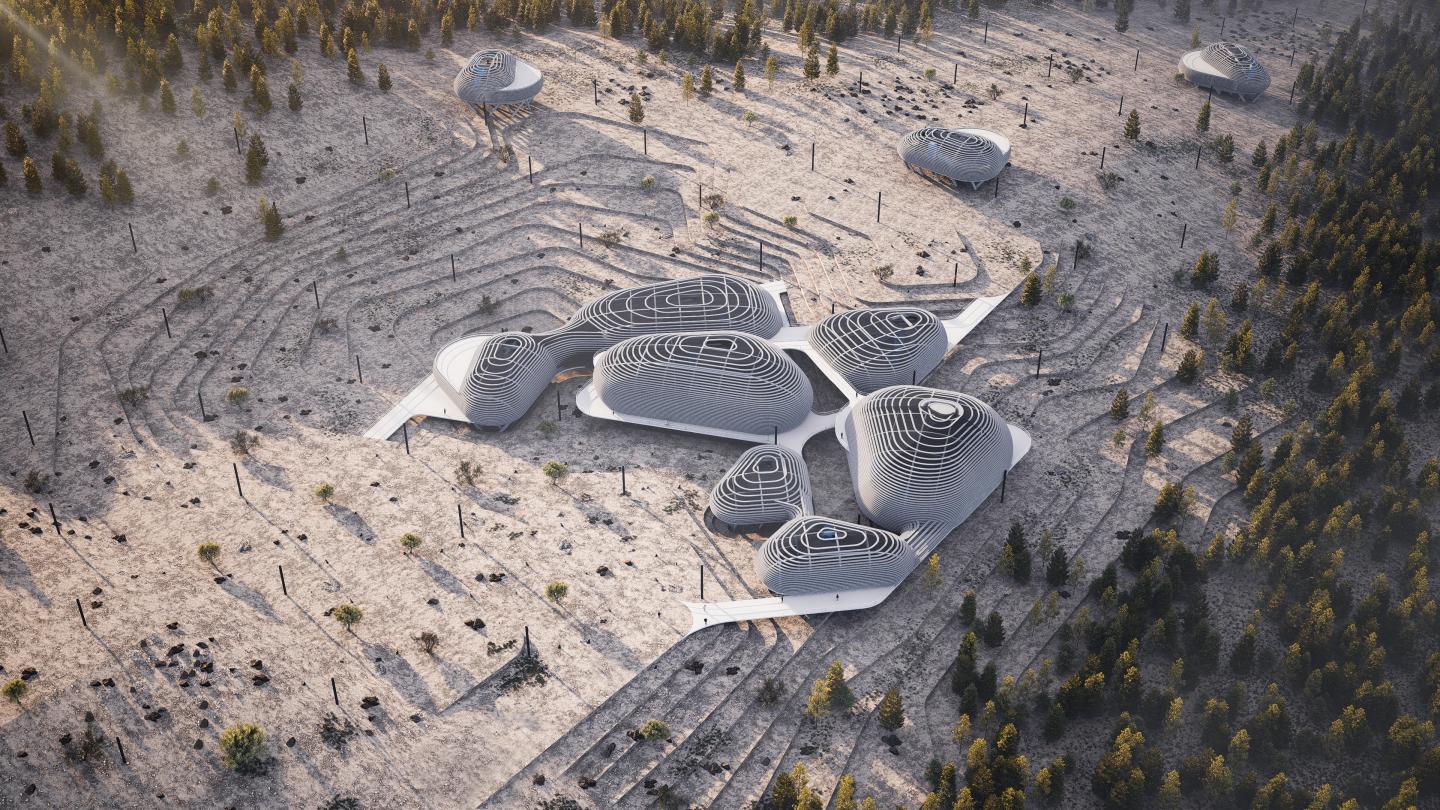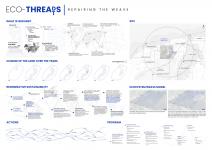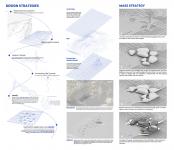Eco-Threads is an ecological rehabilitation and awareness point that regenerates the environment by using many scientific processes.
Eco-Threads, was born out of “what is the ground?”. Conceptual readings were made from the works of important philosophers such as Heidegger, Deleuze and Guattari, and research focused on ecology and biology was conducted.
First of all, the origin of the word "context" was retraced. The origin of the word "context" is based on the Latin word "contextus". "Contextus" consists of the words "con-", meaning together, and "texere", meaning to weave or weave.
With the readings made, "Ground is a context that gives meaning to entities and creates them in their environment, and each entity continues its existence within the framework of elements such as soil, topography, vegetation and biodiversity offered by the context in which it is located." It was concluded.
This result is reconciled with the etymological origin of the context and a definition emerges: "Context is a weave, formed by the combination of many elements and their interlocking in harmony."
But can we really talk about such harmony in today's world? Because the strengthening of capitalism, especially with the industrial revolution, led to the domination of humans over humans, and over time, the domination of humans over humans led to the domination of humans over nature. Human beings have transformed the natural environment in line with their own interests and caused direct and indirect effects on the environment. At this point, these effects disrupt the harmony of the elements that make up the context, so the stitches of the weave that make up the context are separated from each other and the weave falls apart.
We see an example where the weave is damaged in the land that is an old quarry and an active rubble dump site in the Güzelbahçe district of Izmir. The attitude adopted here is to propose a system that aims to rehabilitate existing harms, rather than accepting existing harms and preventing new ones. At this point, several methods have been proposed under the title of "Regenerative Sustainability". Some of these are; autonomous technologies, DNA barcoding, artificial selection and nanotechnology applications.
Eco-Threads is a point that incorporates these biological, chemical and technological processes and aims to repair the weave by rehabilitating the land. And while carrying out these renovation works, it also aims to raise environmental awareness by hosting visitors here. The origin of the design is the idea of the threadlikeness of the knitting and the idea that the structure creates its own context.
2024
2024
The structure system consists of steel structure elements that form the final shape of the shell by defining the volume that forms the filamentous form on elliptical carrier elements that extend along the x and y axes determined for each volume and form the main line of the shell. At the points where the elliptical ribs approach the ground, connection to the ground is made with foundations tangentially connected to this elliptical shape.
The volumes are connected to each other by sometimes open and sometimes closed volumes. The thready form not only defines closed volumes, but is also used to separate large spaces such as conference halls from other interior spaces.
The program consists of 5 main parts.
1) Sampling from soil and groundwater
• Autonomous technologies research and development areas
• Autonomous technologies take-off areas and runways
• Sample collection and storage areas
• Sample sterilization areas (Thermal, chemical, radiation, filtration)
2) Analysis and Data Processing
• Sample analysis and data processing areas
• DNA barcoding areas
• Data bank
• Ecosystem weave model creation area
• Microbiology research and development areas
• Molecular biology research and development areas
• Biochemistry research and development areas
• Synthesis biology research and development areas
• Microorganism culture areas
• Habitat simulation areas and pilot areas
3) Restoration Applications
• Microorganism placement areas (irrigation, spraying, drip irrigation or manual distribution)
• Soil chemical and biological renewal areas
• Settlement areas of biological species
• Monitoring and tracking areas
• Afforestation areas and greenhouses
• Recycling areas
4) Welcoming and Awareness
• Reception areas
• Presentation areas
• Digital Media and communication areas
• Exhibition areas
• Workshops
• Library and info-theque
• Observation points
• Walking areas and trails
5) Education
• Microbiology training laboratories
• Molecular biology education laboratories
• Biochemistry education laboratories
• Classes
Designer: Faruk Üner
Supervisor Architects: Assoc. Prof. Dr. Ebru Yılmaz, Assoc. Prof. Dr. Ülkü İnceköse, R.A. Ceren Ergüler
Favorited 11 times











